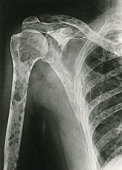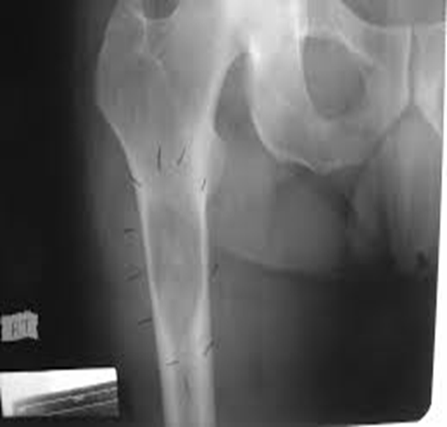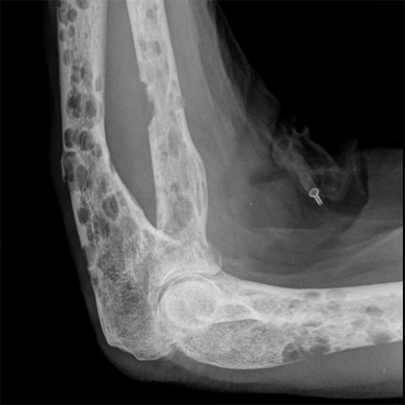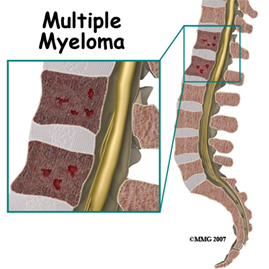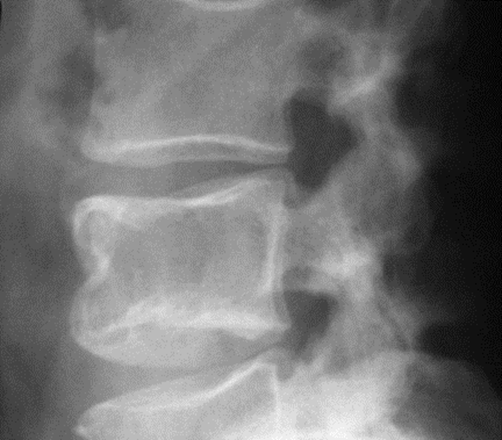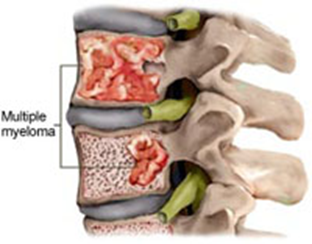What is skeletal survey examination: Multiple Myeloma?
- The skeletal survey X-ray is an X-ray examination of the bone and large cartilage. Usually skeletal survey of the bone is performed to diagnose diseases such as multiple myeloma. The following X-ray examination are performed :X-ray of the skull X-ray, spine, pelvis, ribs , both humerus and femur (long bone) (http://en.wikipedia.org/wiki/Skeletal_survey).
- Multiple Myeloma is a type of cancer of the blood that is formed in the bone marrow. It is the second highest blood cancer after Non-Hodgkin’s lymphoma.
- Multiple Myeloma normally occurs in the spine, pelvic bone, ribs and shoulder.
– Myeloma cancer cells affect blood cells that are produced in t bone marrow (http://www.themmrf.org/living-with-multiple-myeloma/newly-diagnosed-patients/what-is-multiple-myeloma/).
– Plasma cancer cells disrupt the function of the white blood cells which produce antibodies to fight infection and diseases. (http://en.wikipedia.org/wiki/Multiple_myeloma).
– Plasma cancer cells accumulate in the bone marrow and interfere with the production of normal blood cells. It will also cause problems to the kidneys, bone lesions (osteolytic) bone density decreases and brittle.
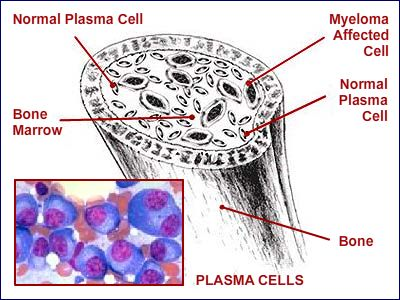 Figure 1: Cross section of the bone marrow
Figure 1: Cross section of the bone marrow
Source: http://www.health.am/ab/more/three-drugs-top-two-in-relapsed-multiple-myeloma/
- One test result is not a conclusive evidence for diagnosis of Multiple Myeloma. The diagnosis made is based on combinations of various factors such assymptoms experienced by patients, physical examination by the doctor and results of other tests such as blood test and X-ray examination. (http://www.cancer.org/cancer/multiplemyeloma/detailedguide/multiple-myeloma-diagnosis).
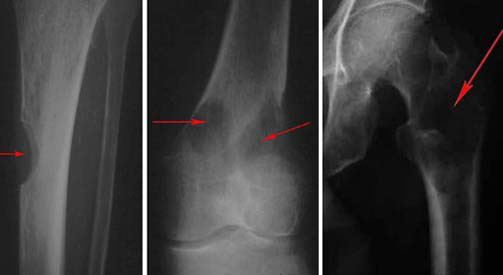 Figure 2: The X-ray showing (osteolytic) lesion of the bone
Figure 2: The X-ray showing (osteolytic) lesion of the bone
Source: http://orthoinfo.aaos.org/topic.cfm?topic=A00086
How and where can I get this examination?
- When you visit your doctor, he/she will decide if you require the examination.
- If required, the doctor will make a request for the examination using the Radiology Examination Request Form
- This examination is available in MoH hospitals.
When is multiple myeloma examination required?
- The doctor will request for a skeletal survey examination for multiple myeloma to verify its presence if there is any symptoms and also to assess the presence of metastasis or spread of cancer cells. This is because it is often difficult to detect multiple myeloma in its early stages because there are no obvious symptoms.
- For many patients, the symptoms are only detected at its late or advanced stage. Blood tests usually able to detect the abnormal protein level in the blood. Among the commonly encountered symptoms are (http://www.cancerquest.org/multiple-myeloma-symptoms-and-detection.html?):
– Pain in the bones
– Chronic fatigue
– Neuropathy
– Recurrent infections
– Kidney failure
– High content of calcium in the blood (hypercalcemia)
– Underweight
- Parts that are often X-rayed for Multiple Myeloma are:
– Chest
– Spine
– Pelvis
– Skull
– Both hands
However other examination can be performed out depending on requirement.
|
(a) |
(b) |
(c) |
Figure 3 (a) – (c): Part of the body often examined for Multiple Myeloma
Source: https://www.google.com.my/search?q=multiple+myeloma
|
(a) |
(b) |
(c) |
Figure 4 (a) – (c): Cancer cells interfere with the production of healthy blood cells in the bone and produce abnormal blood cells and bone lesions
Source: https://www.google.com.my/search?q=multiple+myeloma
Before examination
- The radiographer will explain the examination to the patient. The next of kin is allowed to accompany the patient whilst the explanation is being given to the patient.
- The patient has to remove all metalic objects (eg: hair clips, earrings, chain, and others) from the region of interest, so that it does not cause artifact on the image.
- The radiographer will explain the most suitable position for the examination whether it is lying down, sitting or other position.
- Patient will be instructed to change into hospital gown provided (if necessary).
- Training for breathing instruction will be given (if neceessary).
- Radiation protection will be provided.
During examination
- Patients are adviced to not move during the examination.
- Breathing instruction will be given (if necessary).
- Patient has to give full co-operation throughout the whole examination as there are many parts involved to avoid repeat examination.
After examination
- No special care is required after the examination.
- Patient will be allowed to leave after the examination.
- If there are any problems encountered, please notify the radiographer on duty.
Examination report
All images produced are reviewed by the radiologist and report is prepared.
References
- http://emedicine.medscape.com/article/391742-overview
- http://en.wikipedia.org/wiki/Multiple_myeloma
- http://www.cancer.org/cancer/multiplemyeloma/detailedguide/multiple-myeloma-diagnosis
- http://www.themmrf.org/living-with-multiple-myeloma/newly-diagnosed-patients/what-is-multiple-myeloma/
| Last Review | : | 25 July 2017 |
| Writer | : | Pushpa Thevi Rajendran |
| Accreditor | : | Daud bin Ismail |


